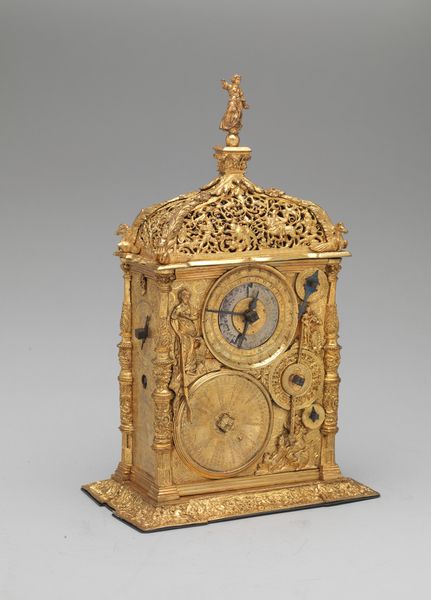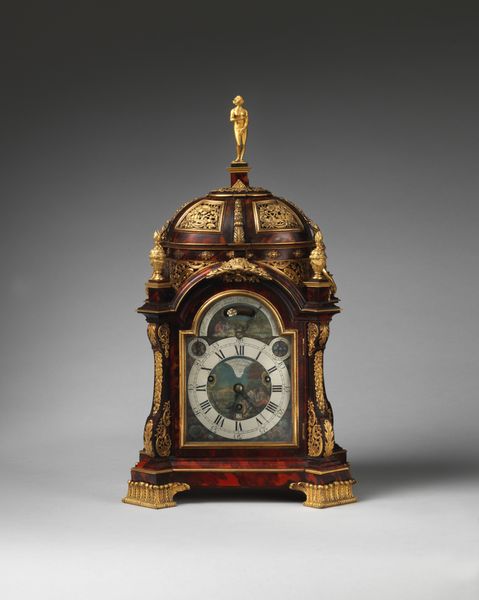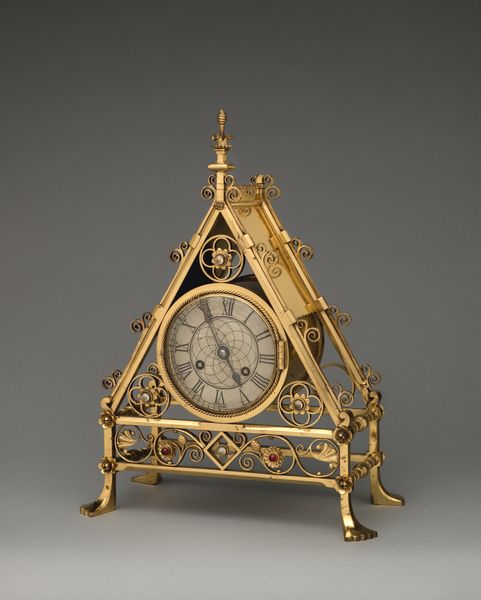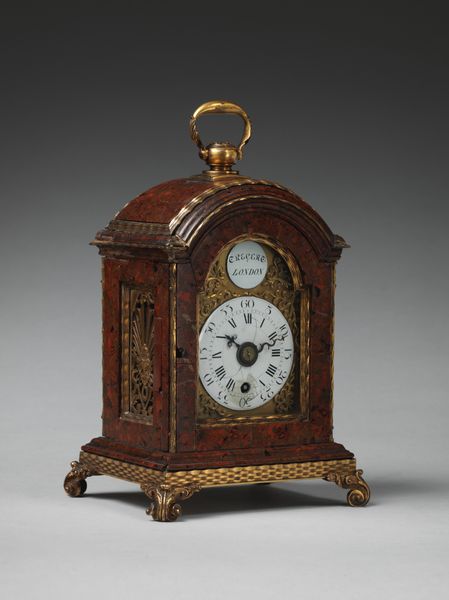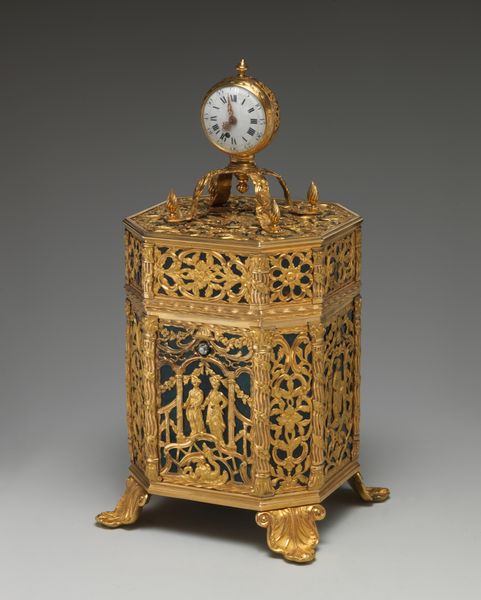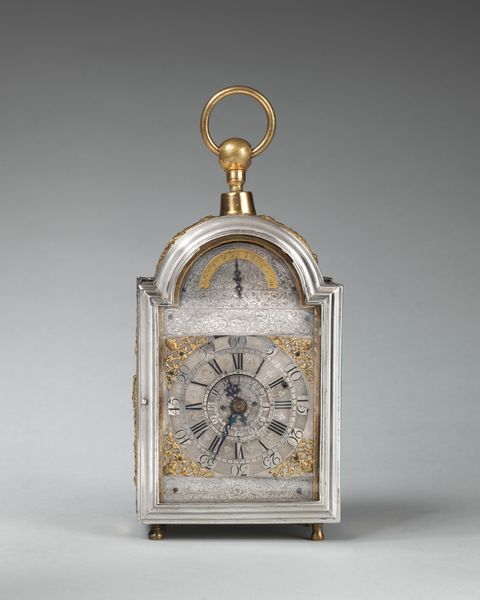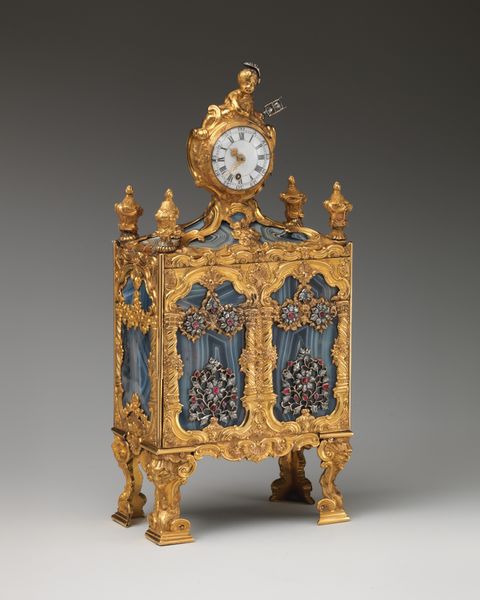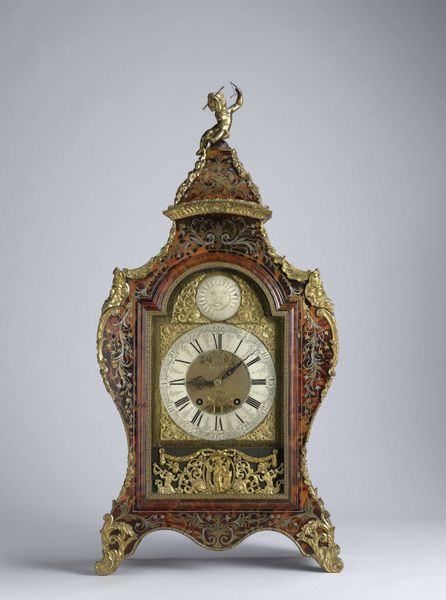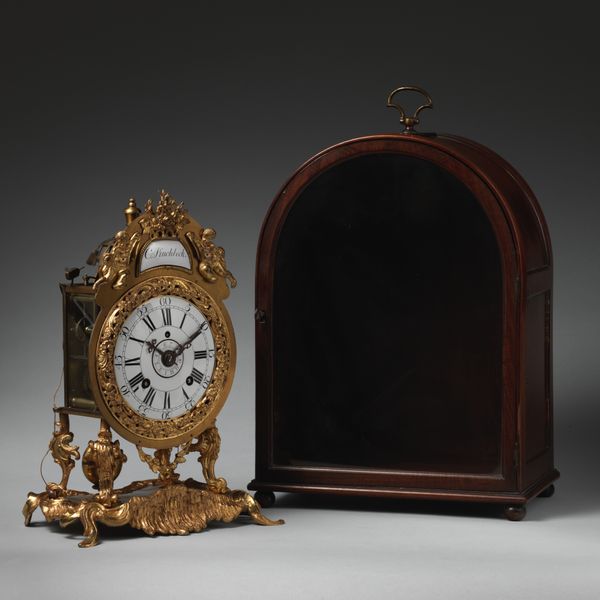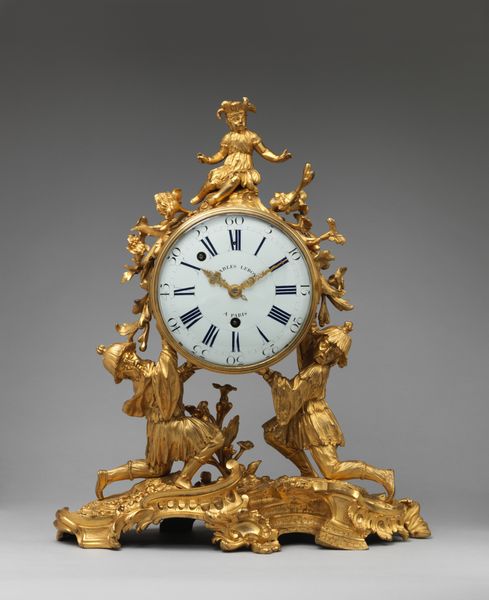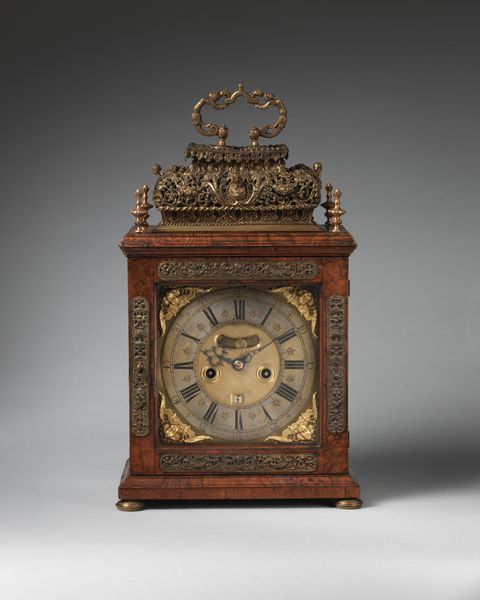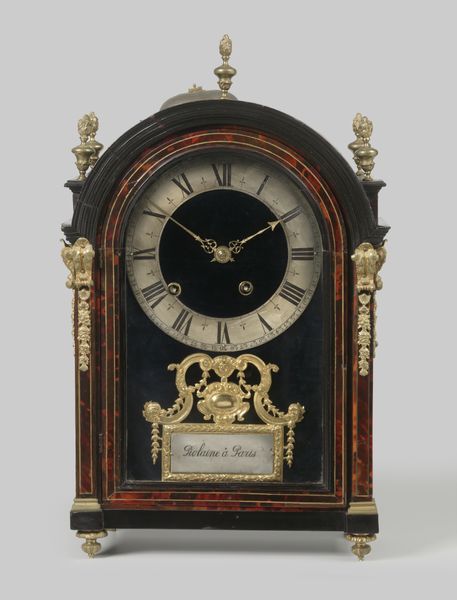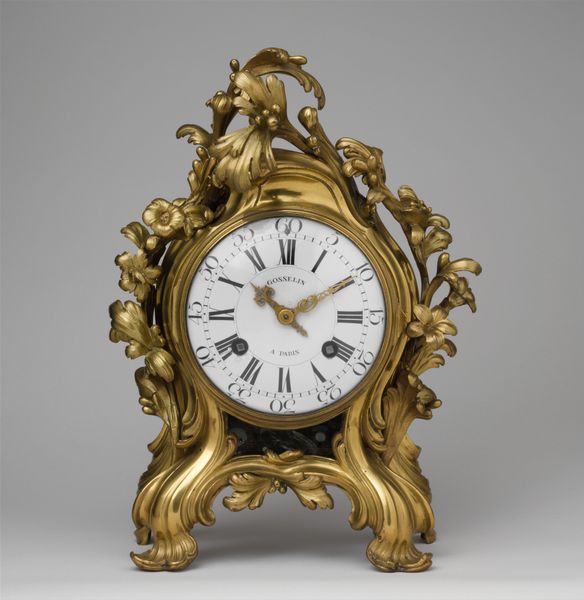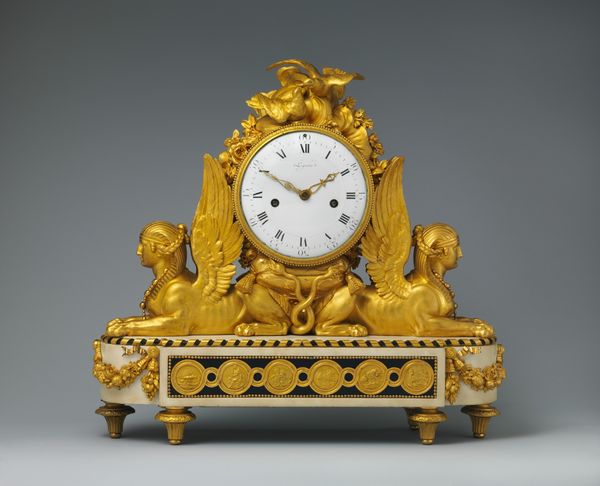
silver, bronze, sculpture
#
silver
#
sculpture
#
bronze
#
sculptural image
#
sculpture
#
orientalism
#
france
#
decorative-art
Dimensions: 20 1/2 x 19 1/2 x 7 3/4 in. (52.07 x 49.53 x 19.69 cm)6 1/2 x 2 3/8 x 7/8 in. (16.51 x 6.03 x 2.22 cm) (pendulum)
Copyright: Public Domain
Editor: Here we have a decorative clock created around 1869 by Emile Reiber, residing in the Minneapolis Institute of Art. The materials listed are bronze and silver. It strikes me how opulent this object is, blending a kind of European grandeur with what appear to be Japanese-inspired motifs. How would you interpret such a blend, especially considering its materials? Curator: It's a prime example of what we call "Orientalism" in decorative arts. Focus on the bronze and silver – not just for their intrinsic value, but as materials processed through specific labor practices. These precious metals indicate a clientele with significant purchasing power, a social elite driving the demand for such objects. This "clock" becomes less about time-telling, and more about conspicuous consumption and a visual manifestation of colonial power dynamics. Editor: So, the silver and bronze aren't simply aesthetic choices? They point to larger economic structures? Curator: Exactly. Consider the clock face itself: almost secondary to the overall decorative scheme. The object becomes a stage for showcasing wealth and cultural appropriation. Reiber likely sourced these materials through established trade routes, some built on exploitation. What looks like harmless artistic borrowing becomes implicated in a network of global exchange with unequal power relations. Editor: That’s fascinating. I hadn’t considered the raw materials as a direct connection to these wider power structures. Curator: And think about the artisans who crafted it. Were they celebrated for their skill, or were they simply anonymous labor contributing to Reiber's vision? The materials prompt these questions, connecting the object to a complex social and economic context. Editor: I guess looking at it just for its aesthetic qualities is too simplistic, missing the whole picture of production. Curator: Indeed. It encourages a deeper inquiry into the object's history, its creation, and its role in reflecting a society shaped by global trade and colonial ambition. Considering the "how" and "why" alongside the "what" changes everything.
Comments
minneapolisinstituteofart about 2 years ago
⋮
This magnificent clock illustrates some of the earliest Japanese influences on European decorative arts following the reopening of Japan to the Western world in 1854. The clock combines European and Asian iinfluences. Its overall form is derived from an 18th-century Chinese table screen; the face and whimsical beast above it is inspired by Tibetan mandalas; and the silver inlay depicts scenes taken from Japanese paintings, lacquerware, and ceramics. Reiber had tremendous interest in Japanese motifs and he imitated Japanese mixed metal and cloisonné work. He spent hours copying Chinese bronzes and Japanese decorative arts for Christofle, the foremost French firm of silverplating and metalwork during the second half of the 19th century.
Join the conversation
Join millions of artists and users on Artera today and experience the ultimate creative platform.
